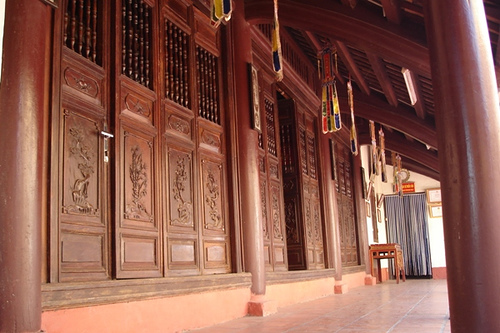Location and history
Located at number 161/85/20, Lac Long Quan Street, District 11, Giac Vien is one of the oldest temples in Ho Chi Minh City. At first, it only used to be a warehouse while another pagoda (named Giac Lam) was being rebuilt. After the renovation of the latter was completed, Giac Vien Pagoda was extended as a thatched-roof hut used for worshipping Bodhisattva and was named Kwan-Yin. Finally, it became a pagoda in 1850, thanks to the monk Hai Tinh Giac Vien. People said that Emperor Gia Long of Nguyen Dynasty used to worship at Giac Vien – known as the centre of Buddhism of the 6 southern provinces in 19th century. Originally constructed in 1789, this pagoda underwent major restorations in 1899 and 1910. Today, it still preserves many Buddhist printing inscriptions of considerable value.
Architecture
The pagoda’s style, decoration and arrangement of the worshipping shrines followed the typical ancient of pagodas built under Nguyen Dynasty of the 19th century, as well as of southern area. Because of its history, Giac Vien’s structure is similar to that of Giac Lam’s, with the main big sanctuary to worship Buddha, 2 corridors to the east and west to prepare and a spacious compartment at the rear. Once coming to Giac Vien Pagoda, tourists should pay attention to the 60 wooden engraving plates, each of them illustrates different symbols of Vietnamese culture and daily life. They are the only ones that have been perfectly-preserved in Vietnam.
How to get there
Since Giac Vien Pagoda is incorporated into Dam Sen Theme Park, getting there by bus No. 11 (can be taken at Ben Thanh Bus Station) is possible. However, though Giac Vien is just down the road from Giac Lam, it’s harder to find. The way is: come out of Giac Lam and turn right onto Lac Long Quan St. Go straight on at the roundabout and the entrance is about 200m further down on the right. For more convenient transport within the city, visitors can choose taxi or motorbike.









